Is it good to sleep on latex? Our expert panel gives their official verdict on this eco mattress material
Breathable, durable, and sustainable, latex is a great option for eco-conscious shoppers and summer nights


Softer than your old innerspring and more sustainable than your average hybrid or memory foam model, a latex mattress offers something for everyone. Especially as we head towards warmer weather, I appreciate the natural breathability of latex.
As mattress types go, latex is relatively rare. You won't find a latex mattress in any old sleep store, which goes some way to explain why some shoppers are skeptical of latex.
So, to settle the debate, I asked my expert panel of mattress manufacturers: 'is it good to sleep on latex?' I've learned all about how latex mattresses are made, how they feel, and their ecological impact. I've combed through our back catalog of reviews to bring you the best mattress for every sleep style, including latex options and eco alternatives.
Is it good to sleep on latex? Our Sleep Editor investigates

Before we begin, it always helps to define our terms. A latex mattress is made from the sap of rubber trees, which is frothed and baked into slabs of foam. Natural latex is free from harsh chemicals, so you know that you're breathing cleaner, healthier air while you sleep.
Many of the best organic mattresses are made from or with natural latex. There are multiple ways of making latex: Dunlop and Talalay are the most popular methods.
To make Dunlop latex, you take rubber sap and bake it in a vulcanization oven to produce dense, firm foam, with a bottom-heavy composition. Dunlop latex makes a great support core, but isn't as breathable or comfortable as Talalay latex.
To make Talalay latex, you pour rubber sap into a mold and use a vacuum to suck out all the oxygen. Then, you inject the sap with carbon dioxide. The result is soft and foamy, not unlike the feel of a memory foam mattress, only more breathable and sustainable. If any of these terms are new to you, don't worry: you can cross-check against our mattress jargon buster.
'Natural latex is a good fit for almost every type of sleeper, especially those looking for pressure relief,' says Byron Golub, Vice President of Product & Merchandising at Saatva. 'Springy and responsive, latex is made to bear your weight and mold to the shape of your body. Thanks to its open-cell structure, latex is naturally breathable, which makes for a cool and comfortable night's sleep. You'll find latex layers inside some of the best cooling mattresses, working hard to dissipate heat overnight.'

'The Avocado Green Mattress is the company’s flagship model, and it's also available in a Vegan option (sans wool),' says expert tester Antonia Santoro. 'It’s constructed of three main layers – two outer layers of GOLS-certified organic Dunlop latex, plus a support layer of pocketed coils in the middle that creates a breathable core and allows for plenty of air circulation.'
Read the full review: Avocado Green Mattress
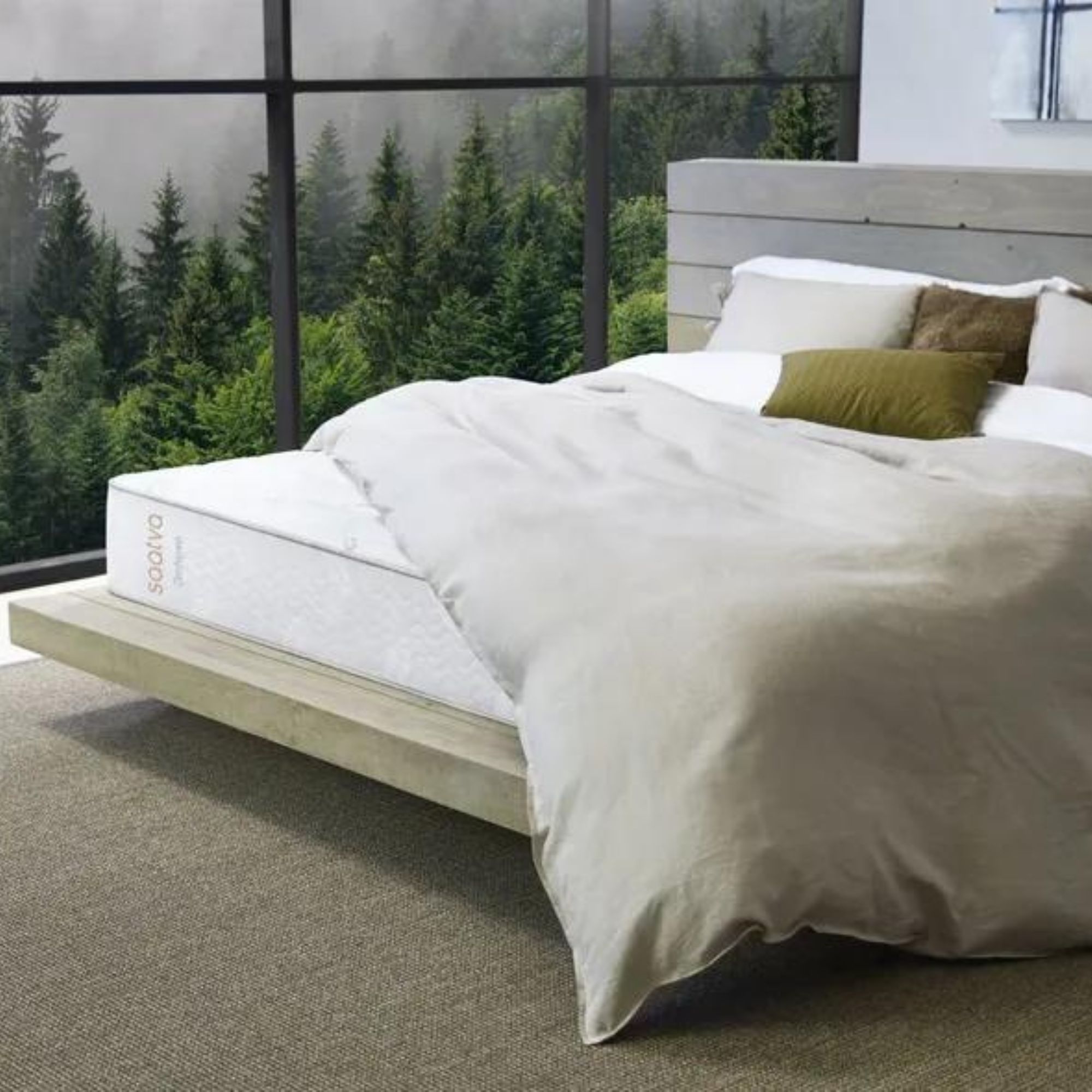
'The Saatva Zenhaven Natural Latex Mattress is dual-sided with flippable firmness,' explains expert tester Jill Waldbeiser: 'Gentle Firm on one side and Luxury Plush on the other. I tried both but I preferred the cushion of the Luxury Plush, though I like to have the option for more support, particularly when an old shoulder injury flares up.'
Read the full review: Saatva Zenhaven Natural Latex Mattress
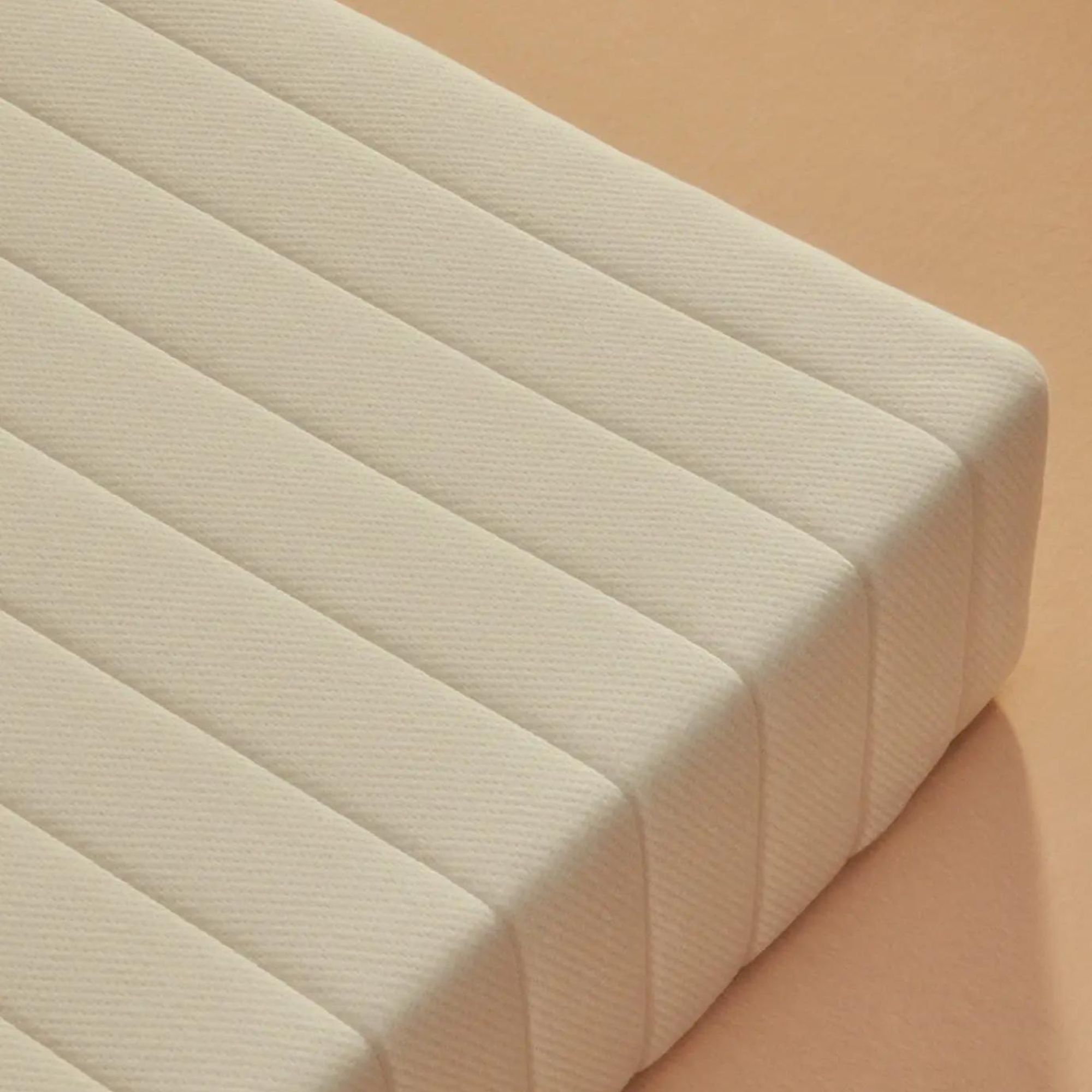
'This is the cheapest organic mattress we've ever tested,' says expert tester Alex Frost, 'and proof that you get what you pay for: the motion isolation leaves something to be desired. Still, I found the Earthfoam Organic Mattress provided great pressure relief around my hips and lower back.'
Read the full review: Earthfoam Organic Mattress
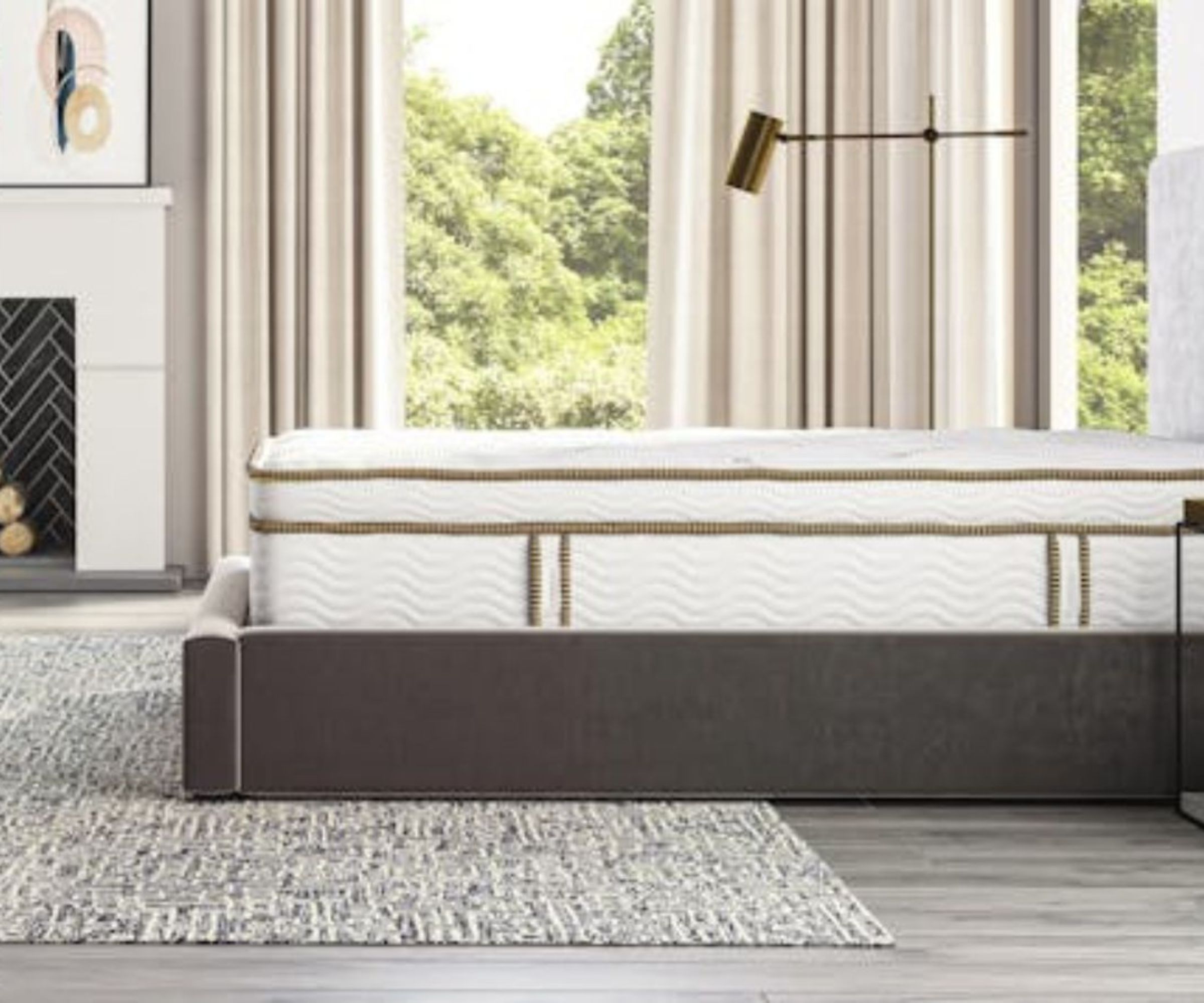
There's a lot to like about latex. According to Christina Heiser, Senior Content Manager at Saatva, 'latex mattresses have a responsive feel, similar to an innerspring, but they also contour to your curves like memory foam.'
Still, a latex mattress might not be the best fit for you if you're buying on a budget. It takes a lot of time and energy (and, consequently, a lot of money) to harvest latex. Many of the best luxury mattresses incorporate latex, which might put this eco material out of your price range.
'Most commonly available latex is actually synthetic or blended,' warns Jack Dell'Accio, CEO & Founder of Essentia Mattress, 'as mattress manufacturers try to cut corners and reduce costs.'
'Most mattress producers source latex foams with overly simple formulations, resulting in beds that feel too firm or too soft,' Jack continues. 'It's important to find a latex producer with adaptive formulations to make a more supportive mattress. The highest-performing products are GOLS-certified organic.'

'The Woolroom Hebridean 3000 is a high-performance, high-quality mattress,' says News Editor Sophie Edwards. 'It's a great option for side sleepers, people with back pain, and those who tend to move a lot in their sleep, as it offers a firm, supportive base. The biggest drawback is the weight, which makes it difficult to flip and rotate the mattress.'
Read the full review: Woolroom Hebridean 3000 Mattress

'I started testing the Leesa Legend Chill Hybrid Mattress on a hot day in late August,' recalls Head of Interiors. 'I couldn't wait to see if the lovely cooling effect of the first five minutes would translate to a restful night's sleep. Spoiler: my husband and I, plus our dog, (probably one of the reasons I overheat) had a great, sweat-free night's sleep.'
Read the full review: Leesa Legend Chill Hybrid Mattress

'The Naturepedic Chorus Mattress offers serious support in six layers,' says expert tester Courtney Irwin. 'Lined with eight inches of encased coils and topped with a micro-coil comfort layer, this is a medium-firm mattress, leaning towards the firmer side. The Naturepedic Chorus Mattress is made from organic materials, ethically sourced, so that you can rest easy.'
Read the full review: Naturepedic Chorus Mattress
Meet our experts

Byron is a product designer and engineer with over ten years of experience in the consumer products industry, now specializing in luxury home furnishings for Saatva, the smarter luxury sleep company.

Christina Heiser is the content director at Saatva, covering sleep tips. She has held previous positions at Everyday Health, Women's Health, and L'Oréal.

Jack is the CEO of Essentia, an organic mattress and bedding brand, as well as a certified sleep coach. He has worked with NBA, NFL, and NHL athletes to help them optimize recovery and performance through sleep.
FAQs
What does a latex mattress feel like?
Where Dunlop latex feels firm and dense, better suited to a support core, Talalay latex is springy and responsive, the sort of material you find in comfort layers. Remember, you can always cross-check any unfamiliar terms against my mattress jargon buster.
Where can I buy a latex mattress?
It's a good question, because not many of the best places to buy a mattress stock latex models. I suggest you start your search with Saatva, before looking further afield to PlushBeds and Avocado.
How long does a latex mattress last?
'How long should a mattress last?' is one of the most common questions I get as a Sleep Editor. My answer varies from person to person, because it depends on the mattress material.
If you take good care of your latex mattress, it could last you as long as 20 years. Latex is naturally resilient, designed to mold to the shape of your body then bounce back once your weight is removed.
So, in answer to your original question: yes, it's good to sleep on latex. Naturally breathable for hot sleepers and responsive to support all sleep positions, latex is an eco-friendly option to suit (almost) everyone.
If you're still wondering, 'are organic mattresses a hoax?', you might appreciate our expert commentary.
Sign up to the Homes & Gardens newsletter
Design expertise in your inbox – from inspiring decorating ideas and beautiful celebrity homes to practical gardening advice and shopping round-ups.

Emilia is our resident sleep writer. She spends her days tracking down the lowest prices on the best mattresses and bedding and spends her nights testing them out from the comfort of her own home. Emilia leads a team of testers across America to find the best mattress for every sleep style, body type, and budget.
Emilia's quest to learn how to sleep better takes her all around the world, from the 3Z mattress factory in Glendale, Arizona to the Hästens headquarters in Köping, Sweden. She's interviewed luxury bedding designers at Shleep and Pure Parima, as well as the Design Manager at IKEA. Before she joined Homes & Gardens, Emilia studied English at the University of Oxford.
You must confirm your public display name before commenting
Please logout and then login again, you will then be prompted to enter your display name.
-
 This surprising way to serve nectarines will serve you – and your guests – all summer long
This surprising way to serve nectarines will serve you – and your guests – all summer longWhip up this beautiful showstopper salad with just a little extra effort and reap the rewards of the wows from your guests
-
 How do you design a modern open-plan kitchen in an ancient, low-ceilinged country cottage? Ditching the wall cabinets, all the handles, and the ceiling lights was just the start
How do you design a modern open-plan kitchen in an ancient, low-ceilinged country cottage? Ditching the wall cabinets, all the handles, and the ceiling lights was just the startExposed stone walls, wood cabinetry, and a harmonious flow have totally transformed this Cotswolds kitchen
-
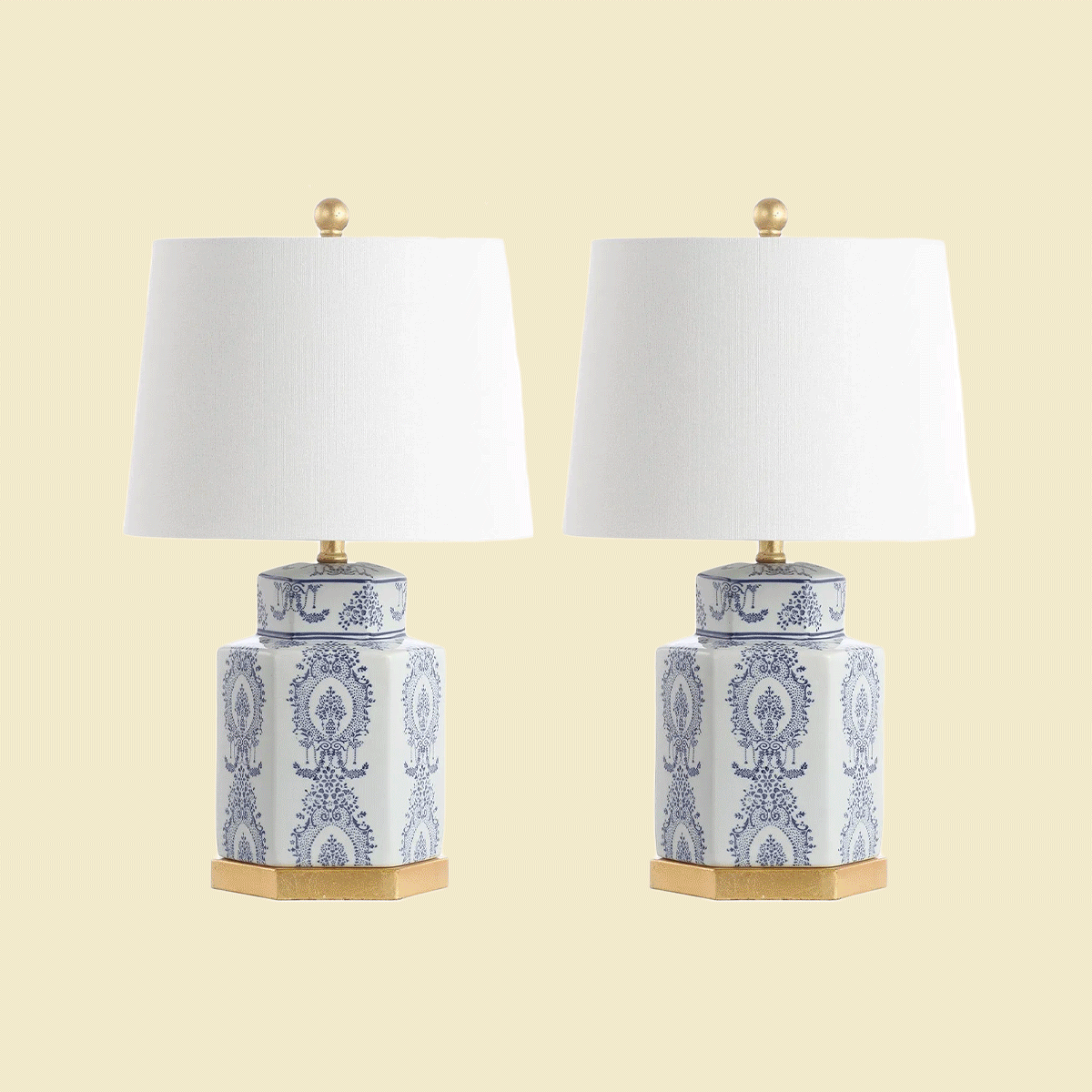 If your space needs a refresh for 2025, these 19 furniture pieces will do the trick
If your space needs a refresh for 2025, these 19 furniture pieces will do the trickOur editor shares her top furniture and décor picks that won't break the bank
-
 Discover the best of British-made beds and bedding with Wrought Iron and Brass Bed Co.
Discover the best of British-made beds and bedding with Wrought Iron and Brass Bed Co.Like strawberries and cream are inherently Wimbledon, British-made beds and mattresses are inherently Wrought Iron and Brass Bed Co.
-
 What is the best direction for sleep? Why sleeping north-south might be better for your wellbeing
What is the best direction for sleep? Why sleeping north-south might be better for your wellbeingAccording to vastu shastra and feng shui, sleeping in a particular direction can promote better sleep, and overall health
-
 How to keep a mattress topper from sliding – 6 quick fixes for a secure fit
How to keep a mattress topper from sliding – 6 quick fixes for a secure fitI've worked out how to keep your mattress topper from sliding using products from your toolbox and linen closet − the solution might be simpler than you think
-
 How to store a mattress topper – expert tips on keeping it in top condition
How to store a mattress topper – expert tips on keeping it in top conditionStoring your mattress topper wrong could damage its condition – follow this expert-led guide on how to store a mattress topper to keep your bed comfortable for years to come
-
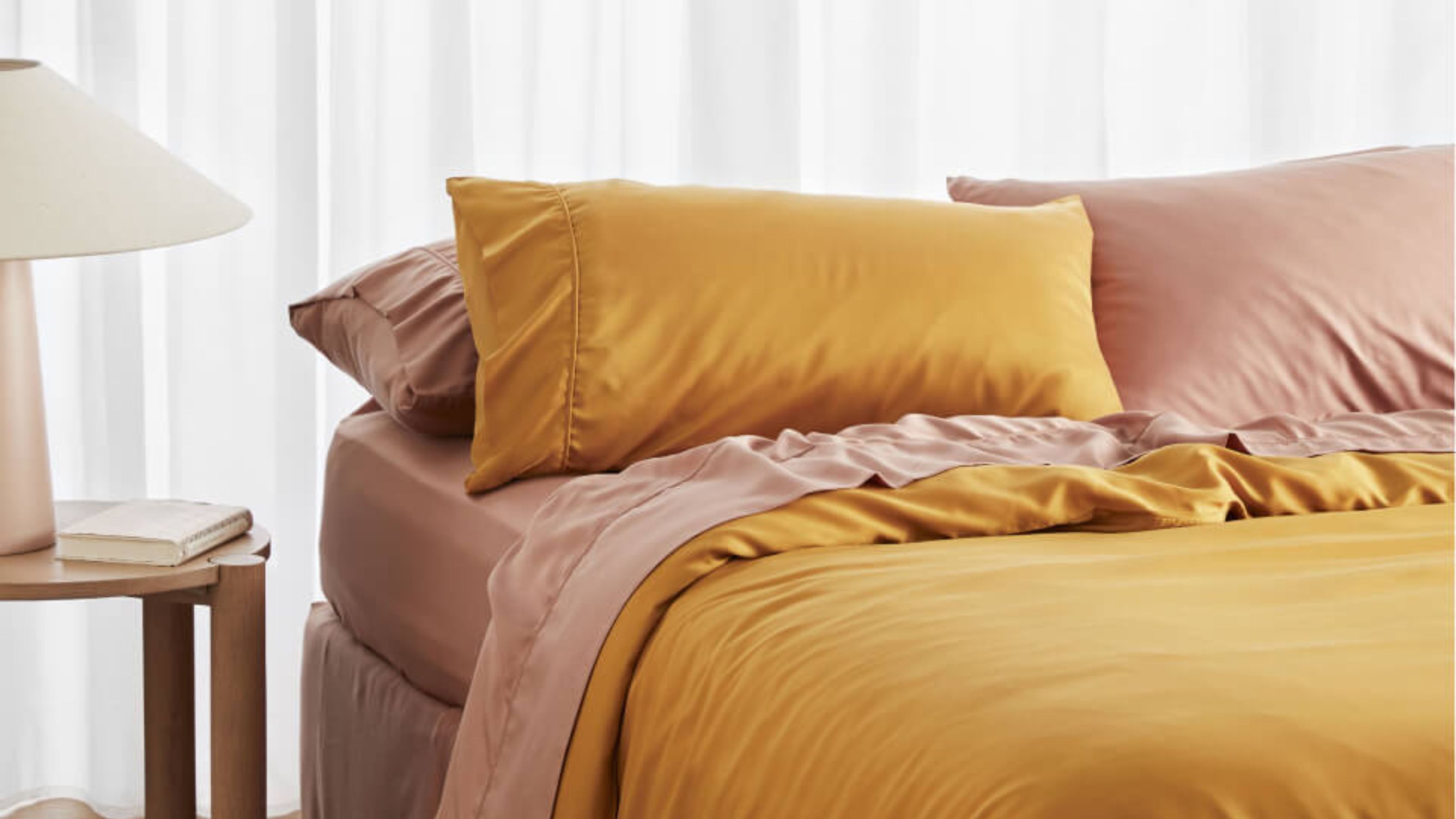 What is the best temperature for sleep? Expert advice on why it matters
What is the best temperature for sleep? Expert advice on why it mattersWe spoke to a sleep scientist and health expert on the best temperature for sleep and why it matters – here's everything you need to know for better sleep, even in a heatwave
-
 Should you sleep with your bedroom door open? Sleep scientists say it has positive effects
Should you sleep with your bedroom door open? Sleep scientists say it has positive effectsSleep scientists and air quality experts explain why sleeping with the bedroom door open could have a positive impact on your sleep and health
-
 Which is the worst mattress material? Our expert testers weigh in
Which is the worst mattress material? Our expert testers weigh inI asked our team of expert testers to tell me all about their least favorite mattress materials and what they suggest we sleep on, instead